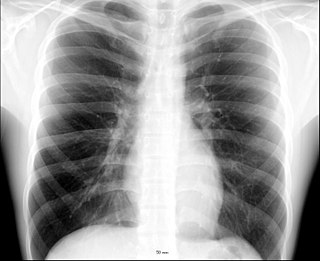
The thorax or chest is a part of the anatomy of mammals and other tetrapod animals located between the neck and the abdomen. In insects, crustaceans, and the extinct trilobites, the thorax is one of the three main divisions of the creature's body, each of which is in turn composed of multiple segments.

The thoracic diaphragm, or simply the diaphragm, is a sheet of internal skeletal muscle in humans and other mammals that extends across the bottom of the thoracic cavity. The diaphragm is the most important muscle of respiration, and separates the thoracic cavity, containing the heart and lungs, from the abdominal cavity: as the diaphragm contracts, the volume of the thoracic cavity increases, creating a negative pressure there, which draws air into the lungs. Its high oxygen consumption is noted by the many mitochondria and capillaries present; more than in any other skeletal muscle.
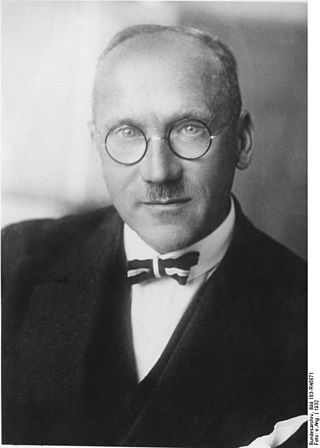
Ernst Ferdinand Sauerbruch was a German surgeon. His major work was on the use of negative-pressure chambers for surgery.

Cardiothoracic surgery is the field of medicine involved in surgical treatment of organs inside the thoracic cavity — generally treatment of conditions of the heart, lungs, and other pleural or mediastinal structures.
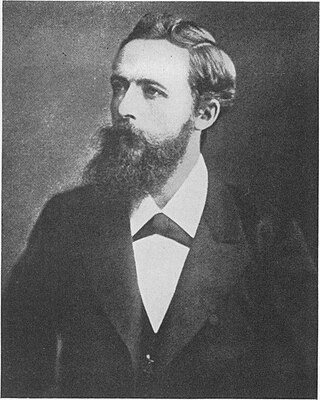
Jan Mikulicz-Radecki was a German-Polish-Austrian surgeon who worked mainly in the German Empire. He was born on 16 May 1850 in Czerniowce in the Austrian Empire and died on 4 June 1905 in Breslau, German Empire. He was professor in Kraków, Breslau, and Königsberg. He was the inventor of new operating techniques and tools, and is one of the pioneers of antiseptics and aseptic techniques. In Poland he is regarded as one of the founders of the Kraków school of surgery.

A thoracotomy is a surgical procedure to gain access into the pleural space of the chest. It is performed by surgeons to gain access to the thoracic organs, most commonly the heart, the lungs, or the esophagus, or for access to the thoracic aorta or the anterior spine. A thoracotomy is the first step in thoracic surgeries including lobectomy or pneumonectomy for lung cancer or to gain thoracic access in major trauma.
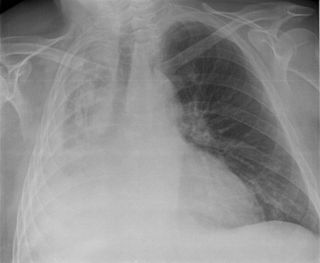
Atelectasis is the partial collapse or closure of a lung resulting in reduced or absent gas exchange. It is usually unilateral, affecting part or all of one lung. It is a condition where the alveoli are deflated down to little or no volume, as distinct from pulmonary consolidation, in which they are filled with liquid. It is often referred to informally as a collapsed lung, although more accurately it usually involves only a partial collapse, and that ambiguous term is also informally used for a fully collapsed lung caused by a pneumothorax.
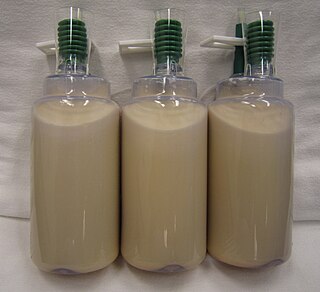
A chylothorax is an abnormal accumulation of chyle, a type of lipid-rich lymph, in the space surrounding the lung. The lymphatics of the digestive system normally returns lipids absorbed from the small bowel via the thoracic duct, which ascends behind the esophagus to drain into the left brachiocephalic vein. If normal thoracic duct drainage is disrupted, either due to obstruction or rupture, chyle can leak and accumulate within the negative-pressured pleural space. In people on a normal diet, this fluid collection can sometimes be identified by its turbid, milky white appearance, since chyle contains emulsified triglycerides.

A pneumonectomy is a surgical procedure to remove a lung. It was first successfully performed in 1933 by Dr. Evarts Graham. This is not to be confused with a lobectomy or segmentectomy, which only removes one part of the lung.

Lobectomy means surgical excision of a lobe. This may refer to a lobe of the lung, a lobe of the thyroid (hemithyroidectomy), a lobe of the brain, or a lobe of the liver (hepatectomy).

Veterinary surgery is surgery performed on non-human animals by veterinarians, whereby the procedures fall into three broad categories: orthopaedics, soft tissue surgery, and neurosurgery. Advanced surgical procedures such as joint replacement, fracture repair, stabilization of cranial cruciate ligament deficiency, oncologic (cancer) surgery, herniated disc treatment, complicated gastrointestinal or urogenital procedures, kidney transplant, skin grafts, complicated wound management, and minimally invasive procedures are performed by veterinary surgeons. Most general practice veterinarians perform routine surgeries such as neuters and minor mass excisions; some also perform additional procedures.
Lobectomy of the lung is a surgical operation where a lobe of the lung is removed. It is done to remove a portion of diseased lung, such as early stage lung cancer.

Rudolf Ulrich Krönlein was a Swiss surgeon who was a native of Stein am Rhein.

The Life of Surgeon Sauerbruch sometimes shortened to Surgeon Sauerbruch is a 1954 West German biographical drama film directed by Rolf Hansen and starring Ewald Balser, Heidemarie Hatheyer and Hilde Körber. It was shot at the Bavaria Studios in Munich and on location in West Berlin. It is based on surgeon Ferdinand Sauerbruch's memoirs Das war mein Leben, which were ghostwritten by Hans Rudolf Berndorff and were published in the German magazine Revue shortly before the release of the film. The film was shot from 26 September 1953 to 20 January 1954 in West Berlin, Munich, Frankfurt, and Hamburg. It premiered on 13 July 1954.
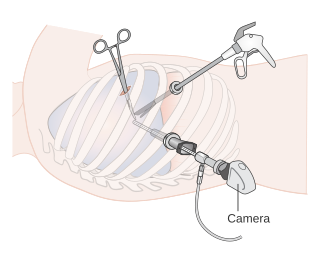
Video-assisted thoracoscopic surgery (VATS) is a type of minimally invasive thoracic surgery performed using a small video camera mounted to a fiberoptic thoracoscope, with or without angulated visualization, which allows the surgeon to see inside the chest by viewing the video images relayed onto a television screen, and perform procedures using elongated surgical instruments. The camera and instruments are inserted into the patient's chest cavity through small incisions in the chest wall, usually via specially designed guiding tubes known as "ports".
Alfred Washington Adson was an American physician, military officer, and surgeon. He was in medical practice with the Mayo Clinic and the Mayo Graduate School of Medicine of the University of Minnesota at Rochester, Minnesota. He was associated with the development of the Section of Neurological Surgery which was first established at Mayo in 1919. He functioned as its chair until 1946. He undertook pioneering neurosurgery and gave his name to a medical condition, a medical sign, a medical diagnostic manoeuvre, and medical instruments.
Video-assisted thoracoscopic surgery (VATS) lobectomy is an approach to lung cancer surgery.

Rudolph Nissen was a German surgeon who chaired surgery departments in Turkey, the United States and Switzerland. The Nissen fundoplication, a surgical procedure for the treatment of gastroesophageal reflux disease, is named after him.
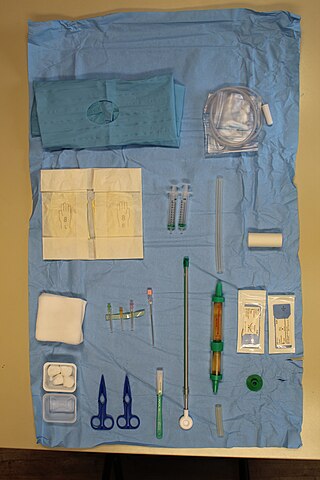
Chest drains are surgical drains placed within the pleural space to facilitate removal of unwanted substances in order to preserve respiratory functions and hemodynamic stability. Some chest drains may utilize a flutter valve to prevent retrograde flow, but those that do not have physical valves employ a water trap seal design, often aided by continuous suction from a wall suction or a portable vacuum pump.

Lung surgery is a type of thoracic surgery involving the repair or removal of lung tissue, and can be used to treat a variety of conditions ranging from lung cancer to pulmonary hypertension. Common operations include anatomic and nonanatomic resections, pleurodesis and lung transplants. Though records of lung surgery date back to the Classical Age, new techniques such as VATS continue to be developed.
















